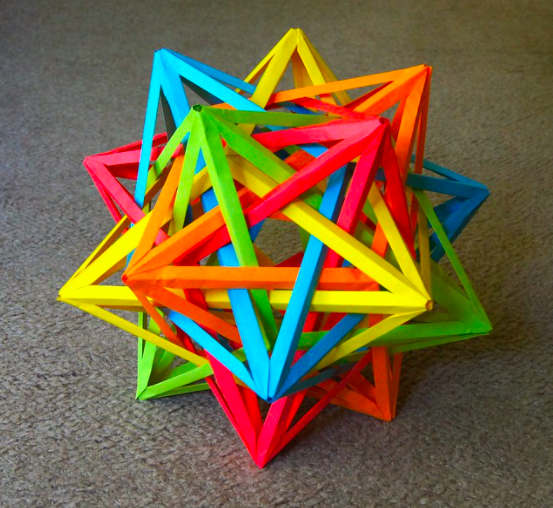Dear Montecito: Alec Sherwin
It was not my intention to feature quite so many letters in this column that draw attention to my personal kryptonite (math), and yet, here we are. This week you are being treated to a letter from someone who is not only a talented visual artist but also an aspiring mathematician. Meet Alec Sherwin! Son of local musician Lanny Sherwin, Alec is a 23-year-old Santa Barbara City College student with a mind for mathematics and a soul for geometric-style art.
I have so rarely had that moment of awe where all the shapes and numbers and forms come together to be “elegant” in the way we always hear math aficionados swoon over. However, I can say that speaking with Alec will be one of those rare moments. Both his raw enthusiasm and indelible appreciation for mathematics as a discipline of the arts are infectious to even the least mathematically inclined.
Dear Montecito,

Hi, my name is Alec Sherwin. I am 23. I’ve lived here for 16 years, attending the Waldorf School, MUS, Marymount of Santa Barbara, and then Anacapa. I don’t really know what I want to study yet, although something in the field of mathematics feels like a good start. Right now, I’m enrolled in a math course, a chemistry course, and a film course at Santa Barbara City College, but admittedly I spend a lot of my spare time doing visual art. In particular, origami and geometric-style drawing.
Origami has been a long-time passion of mine. It is something I’ve actually been doing since I was about five years old. My parents wanted to expose me to as many art forms as possible – drawing, fingerpainting, beeswax sculpture. But receiving an origami kit from my parents was the turning point. My immediate excitement for this art form was followed by a long period of neglect. However, my interest in origami exploded after watching the documentary Between the Folds, which is when I thought to myself: “This is what I want to do 24/7.”
I started with a handful of international conventions in New York City where I got to display my work. I think it was in 2012 when I came across another man’s display and became fascinated with his work. That was my first introduction to the discipline of modular origami. Since then, I’ve featured at other exhibitions including a show at Lotusland where I got to display my work in the discipline of modular origami, specifically in a subgroup called “wire-frame polyhedral,” “compound polyhedral,” or “polypolyhedra.”
Although I have been doing origami for 18 years, I still find that my process is being discovered. It is the craft that requires a certain entry-level literacy before everything begins to unfold, so to speak. But once you have engaged and become fluent in the basics, it is really quite instinctive. Ironically, I’m not too familiar with the terminology. Usually, I am visually aware of the basic origami bases and the different base names but may not be able to match all the bases with their corresponding names. I would say being able to label particular forms is less important than being able to understand how they work in composition. This is where origami becomes particularly fascinating, especially as I work and become better at creating original designs.

Comparatively, I’ve spent a lot less time on the drawing than I have on origami. But I manage ways of sneaking it into my schedule here and there. Most of my drawing comes from my fascination with mathematics. I think it might surprise people how extraordinarily compatible the two are, but math has been a continual source of inspiration for my art. Take, for example, the “Lie group,” an algebraic structure that models continuous symmetry. This was the inspiration for a recent piece of mine. I appreciate the continuous and rotational symmetry and simply took the pleasure of painting the structure with an alternating checkerboard color pattern.
Or take the Mandelbrot set. The Mandelbrot set is regarded as the first computer-generated fractal and originally discovered by the Polish-born French American mathematician Benoit B. Mandelbrot (who would’ve turned 96 on the 20th of November). Mandelbrot is the founder of the field of mathematics called fractal geometry. It has also been described as a representation of an iterated function on the complex plane. Fractals are basically any geometric shape that are self-similar and contain smaller and simpler copies of their overall shape within itself. You can zoom in infinitely because the line, the outside of the shape, never stops and never becomes pixelated.
This is all, of course, just the tip of the iceberg. Mathematics lends itself so wholly to visual art especially in its infinite geometric potential. But to tell the truth, origami seems to be struggling to be seen as an art form and is often relegated to no more than a “craft.” It is sometimes difficult to articulate exactly why people tend to disqualify origami or even why there is something inherently artful in so much of mathematics, so I’ll leave you with this experience of mine: I often find the visual representation of mathematics to be satisfying, fulfilling, with the level or precision one can obtain from various calculations. And beautiful also. I recently tried to take an artistic perspective on something mathematically based by 3-D printing a group of polyhedra that extends into the 4th dimension. Now, we cannot visualize 4-D in 3-D, but what we can do is make a 3-D cross section in our model and it creates something that looks like a distortion in time. It can be hard to see sometimes. But I think this is art.
Regards,
Alec
P.S. Parents of Montecito children, if you have recommendations on people to feature in “Dear Montecito” please contact me, stellajanepierce@gmail.com







You must be logged in to post a comment.